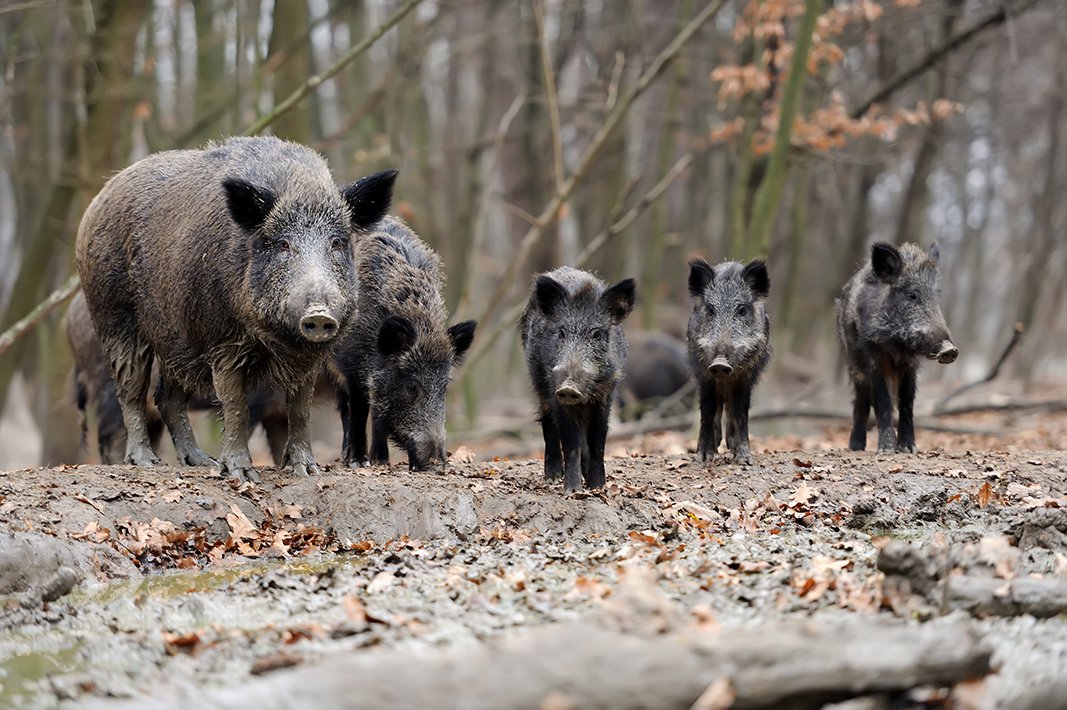THIS CURRICULUM PACKAGE IS IN DRAFT FORM AND IS SUBJECT TO CHANGE. PLEASE DO NOT COPY AND DISTRIBUTE FOR USE BEYOND YOUR CLASSROOM.
It is no wonder why pigs were one of the first animals domesticated by humans. Most people know that pigs provide many nutritious food items such as sausage, bacon, ham, and ribs. Pork is the most widely consumed meat product in the world. Pigs help us meet the world’s food needs and supply us with general consumer items. Soaps, cosmetics, sports equipment, industrial glues, lubricants, and many other products contain ingredients from pigs and other contributing livestock. Long before humans made synthetic ingredients, they realized the value of using every part of an animal.
Even more amazing is that some pig parts provide life-saving medicines and organ and tissue replacements for humans. Insulin, an essential medication for people with a medical condition called diabetes, can be made from pig parts. Heart valves from pigs have also been successfully transplanted in humans for more than 50 years. Most recently, surgeons prolonged a man’s life using the first heart from a pig that was genetically modified to reduce organ rejection. How far technology has come!
In this collection of lessons and activities, we want to show students the many ways that pigs and humans interact through scientific concepts. In addition to utilizing pig resources, those include adaptation, human influence on genetic traits, how pigs are handled and trained through stimulus and response, and finding more environmentally-sustainable ways to raise these essential contributors to our society.
Kentucky Agriculture and Environment in the Classroom created this curriculum package with support from the Kentucky Pork Producers Association and the Kentucky Agricultural Development Fund.
Contributors
We would like to thank the following contributors to this project:
Curriculum Development, Editor, and Graphic Design - Jennifer Elwell, Kentucky Agriculture and Environment in the Classroom
Curriculum Development:
Jennifer McNulty, Retired Kentucky Science Teacher
Leslie Meredith, Hardin Co. Middle School Science Teacher
Anna Campbell, Jessamine Co. Middle School Science Teacher
Technical Resource - Niki Ellis, Kentucky Pork Producers Association
Kentucky Academic Standard Connections
NGSS
MS-ESS3-3 Apply scientific principles to design a method for monitoring and minimizing a human impact on the environment.
MS-ESS3-4: Human Consumption of Natural Resources - Construct an argument supported by evidence for how increases in human population and per-capita consumption of natural resources impact earth’s systems. (Cause and Effect)
MS-LS1-8: Gather and synthesize information that sensory receptors respond to stimuli by sending messages to the brain for immediate behavior or storage of memories.
MS-LS2-1. Analyze and interpret data to provide evidence for the effects of resource availability on organisms and populations of organisms in an ecosystem.
MS-LS2-4. Construct an argument supported by empirical evidence that changes to physical or biological components of an ecosystem affect populations.
MS-LS4-4. Construct an explanation based on evidence that describes how genetic variations of traits in a population increase some individuals’ probability of surviving and reproducing in a specific environment.
MS.LS4-5. Gather and synthesize information about the technologies that have changed the way humans influence the inheritance of desired traits in organisms.
MS-PS1-3: Matter and Its Interactions - Gather and make sense of information to describe that synthetic materials come from natural resources and impact society.
ELA/Literacy Standards
RST.6-8.1 Cite specific textual evidence to support analysis of science and technical texts.
RST.6-8.7 Integrate quantitative or technical information expressed in words in a text with a version of that information expressed visually (e.g., in a flowchart, diagram, model, graph, or table).
WHST.6-8.1 Write arguments focused on discipline content.
WHST.6-8.8 Gather relevant information from multiple print and digital sources, using search terms effectively; assess the credibility and accuracy of each source; and quote or paraphrase the data and conclusions of others while avoiding plagiarism and following a standard format for citation.
WHST.6-8.9 Draw evidence from informational texts to support analysis, reflection, and research.
NGSS Standards-Aligned Lessons
Coming soon
What can pigs teach us about stimulus and response? - If you are a middle school teacher and would like to review this lesson/test it in class, please email jennifer@teachkyag.org.
What can pigs teach us about human impacts on the environment?







